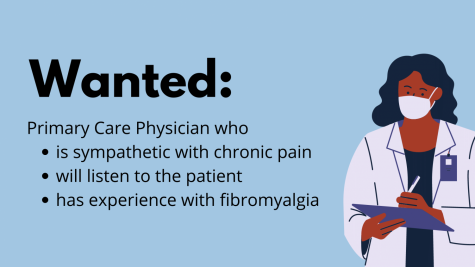Healthy but hurting: The stigma of fibromyalgia
Fibromyalgia, and other invisible illnesses, are often illustrated by an iceberg. What you can see on the surface is often just a glimpse of what’s actually happening.
I am grateful for my fibromyalgia diagnosis because it allows me to put a name to my pain.
In high school I was frequently “sick.” Because of debilitating pain throughout my entire body, I was often absent and had a lot of late assignments. When my dad called the school to tell them I wasn’t coming, they wanted to know the reason for my absence.
There were many days where I felt terrible, but I wasn’t really “sick.” I didn’t have a fever and I wasn’t throwing up. Saying that I just didn’t feel good wasn’t really enough for them, so I usually just said I was sick. I even remember lying about having a fever a few times just so I wouldn’t feel as ashamed about staying home.
That’s the stigma of fibromyalgia. I wasn’t diagnosed in high school, but looking back now, I can clearly remember all the times I had unexplained pain that caused me to miss out on school, sports and social events.
When I played sports, I struggled with pain too. My ankles and knees were always hurting to the point that I wore braces. There were times where I was convinced I broke something, but I would go get an x-ray just to be told that everything was normal.
Looking back, I’m not sure if having a fibromyalgia diagnosis in high school would have helped. As I’ve discussed in one of my previous articles, there is very little known about fibromyalgia. Doctors aren’t sure why it happens or how it happens.
Fibromyalgia isn’t like having lupus or arthritis, there is no “evidence” of the disease. Fibromyalgia is a last resort diagnosis, meaning that your doctor will rule out everything else before giving you the diagnosis.
At times I have wished that I had been diagnosed with something else like arthritis, but at the same time, I am grateful that my condition will have no lasting impact on my body like arthritis would.
One of the hardships of fibromyalgia is that it is entirely invisible. The pain to me is very real, but unless you’re in my body, feeling what I feel, then you can’t fully understand the extent of it. It’s as if you have lupus or arthritis, but you don’t. Fibromyalgia can mimic symptoms of other diseases, but comes with none of the proof.
When I tell someone I have fibromyalgia, I usually have to explain what it is. Even a year and a half after my diagnosis, I still struggle to define it. I usually say something along the lines of “my body hurts a lot. There’s technically nothing wrong with me, but my brain processes pain incorrectly.”
If the conversation goes further, I generally explain the types of pain I experience and the different methods I’ve tried to decrease my symptoms, and how most of them were ineffective.
Even as I write this, I’m not exactly sure how to explain it. I’ve heard some people describe fibromyalgia as an autoimmune disorder, which isn’t correct to my knowledge. It’s easy to say what fibromyalgia isn’t, but difficult to explain what it is.
I hope that in these next 10 years, there will be more knowledge about fibromyalgia and a better explanation for it.
Edited by Ellie Walker and Alyssa Storm
Your donation will support the student journalists of Washburn University. Your contribution will allow us to purchase equipment and cover our annual website hosting costs.














